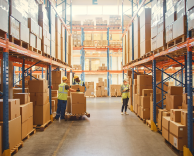Best Practices to Avoid Contaminants While Topping Up Lubricants
Introduction
Lubrication plays a pivotal role in ensuring the smooth operation and longevity of machinery.
Regular topping up of lubricants is a common practice in industries, but the cleanliness of oil
cans and top-up containers is often overlooked. This negligence can lead to the introduction of
particle contaminants into the system, causing more harm than good.
In this article, we’ll explore the best practices to prevent contamination during lubricant
top-ups and discuss why clean lubricants are crucial for machinery health.
The Importance of Clean Lubricants
Clean lubricants act as the lifeblood of industrial machinery. They reduce friction, minimize wear and tear, and protect components from corrosion. However, even the smallest particle contaminants can compromise lubricant effectiveness, leading to:
- Increased component wear.
- Reduced equipment lifespan.
- Frequent breakdowns and costly downtime.
Thus, maintaining lubricant cleanliness is not just a best practice but a necessity for ensuring optimal machinery performance.
Risks of Improper Topping-Up Practices
Improper lubricant handling during topping up can introduce:
1.Particle Contaminants: Dirt, dust, and debris often find their way into open containers or unsealed systems.
2.Water Contamination: Unprotected containers are prone to moisture ingress, leading to emulsified oils.
3.Cross-Contamination: Mixing incompatible lubricants can degrade their properties, causing inefficiencies
4.Corrosion: Contaminants can accelerate the corrosion of internal components, reducing their lifespan.
Best Practices for Oil Cans and Top-Up Containers
1. Keep Your Containers Sealed
Always use containers that can be sealed airtight. This prevents contaminants like dust, dirt, and water from entering the lubricant. Ensure you reseal the containers immediately after use to maintain cleanliness.
2. Avoid Galvanized Containers
Galvanized containers are not suitable for lubricant storage as they act as dirt magnets. Additionally, zinc particles from galvanized coatings can mix with the oil, leading to unwanted chemical reactions and degraded lubricant performance.
3. Dedicate and Label Your Containers
Assign containers for specific lubricant types or classes of mixable lubricants. Proper labeling helps prevent mixing incompatible lubricants, which can compromise their performance and damage machinery.
4. Use Designated Lockers
Avoid storing oil cans and containers near machines where they are exposed to dust and debris. Instead, use designated lockers or cabinets to keep containers clean and protected when not in use.
5. Regular Cleaning of Containers
Inspect containers regularly for signs of contamination, such as dirt, water, or debris. Even minute contamination can compromise lubricant quality. Develop a routine cleaning schedule to ensure containers remain free from impurities.
Additional Tips for Maintaining Lubrication Integrity
- Use Filtered Funnels: When transferring oil from containers, use filtered funnels to prevent particles from entering the system.
- Adopt a Color-Coding System: Implement a color-coding scheme for containers to identify lubricant types at a glance.
- Train Your Team: Educate your workforce on the importance of clean lubrication practices and proper container handling.
- Monitor Lubricant Condition: Regularly test lubricants for contaminants to ensure they meet operational standards.
- Invest in Quality Containers: Use high-quality, non-galvanized containers specifically designed for industrial lubricants.
Impact of Contamination on Machinery Performance
Contamination has a direct impact on machinery performance. Here’s how:
- Increased Friction: Particles in the lubricant can act as abrasives, increasing wear and tear.
- Reduced Efficiency: Contaminated lubricants lose their ability to reduce friction effectively, leading to energy losses.
- Higher Maintenance Costs: Frequent breakdowns caused by contaminated lubricants result in increased maintenance expenses.
- System Failures: Over time, contamination can lead to catastrophic equipment failures, affecting productivity.
By adopting best practices, industries can mitigate these risks and ensure their machinery operates at peak efficiency.
Conclusion
Lubricant cleanliness is a critical yet often overlooked aspect of machinery maintenance.
Neglecting proper practices during lubricant top-ups can introduce contaminants that compromise
equipment performance, increase maintenance costs, and reduce machinery lifespan. By
implementing best practices—such as using sealed, non-galvanized containers, adopting
color-coding systems, and regularly training personnel industries can protect their lubricants
from contamination and, in turn, safeguard their machinery.
Remember, clean lubrication is not just about maintaining oil quality; it’s about preserving the
reliability and efficiency of your operations. Investing in these preventive measures today will
lead to significant long-term savings and enhanced productivity tomorrow.





